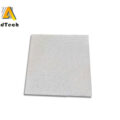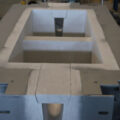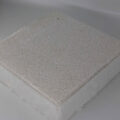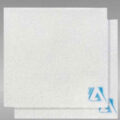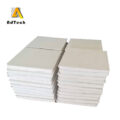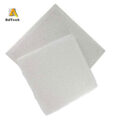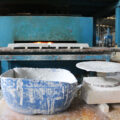The yield rate of aluminum extrusions for construction in Indian aluminum plants has been low for a long time, and is unstable, and the die life is not high. After years of production practice and follow-up observation, it was found that the quality of the ingots during the casting process was not high, which affected the product quality. The inclusions in the ingot destroy the continuity of the metal and are often one of the reasons for the cracks, thereby reducing the processing performance of the aluminum alloy. The traditional purification process of aluminum alloy is to use flux to remove slag and gas from the aluminum melt, because it can not remove the fine and suspended non-metallic inclusions in the aluminum melt. With the development of science and technology, traditional refining processes can no longer meet the needs of modern production, so new methods for purifying aluminum melt have been successively studied at home and abroad. The Indian aluminum plant has effectively improved the quality of ingots by using ceramic foam filter technology to filter molten aluminum.
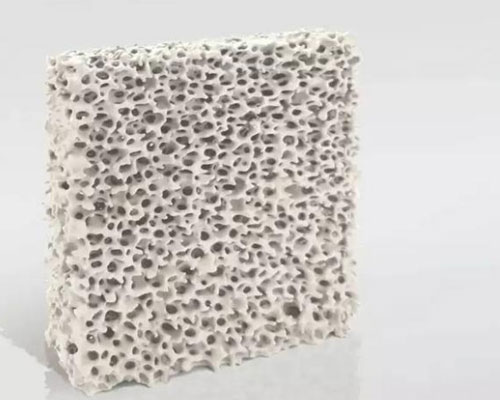
Once the foam ceramic filter technology has been developed, it has shown great vitality and has been applied in semi-continuous casting and forming castings in the United States, Japan, Canada, Switzerland and other countries. Foam ceramic filtration is a new type of filter plate made of industrial sponge as a carrier, filled with heat-resistant ceramics, and then sintered.
When the ceramic foam filter plate filters molten aluminum, the molten aluminum flows through the tortuous holes of the ceramic filter plate. The non-metallic impurities and oxide film in the molten aluminum are affected by the combined action of the axial pressure, friction, and surface adsorption of the molten aluminum. It is retained on the inner surface of the holes and the crevices of the ceramic filter plate, so that the slag is separated from the molten aluminum. After a period of filtering, the slag remaining on the ceramic filter plate also participates in the adsorption of the slag, which can play a filtering role. Since the performance of the slag adsorbed on the ceramic filter plate is exactly the same as that of the slag to be adsorbed in the molten aluminum, its surface area ratio is much larger than that of the ceramic filter plate, and the surface activity is much greater than that of the ceramic filter plate, so the ability to adsorb and trap the slag in the aluminum liquid is far Much larger than the ceramic filter plate. Because of this, the ceramic filter plate can filter out fine slag that is many times smaller than its own hole.
During the filtration process, the slag adsorbed on the ceramic filter plate gradually grows up after adsorbing and intercepting the slag in the aluminum liquid. Under the agitation and scouring of the liquid flow, the slag with extremely low strength may be broken or removed from the ceramic filter plate. Fall off. If the ceramic filter plate is thicker or has small holes during the slag shedding process, it may be intercepted or adsorbed again. Therefore, in general, the thicker the ceramic plate, the smaller the holes, and the slower the flow rate of the molten aluminum through the ceramic plate, the better the filtering effect. The total amount and cleanliness of molten aluminum basically do not affect the filtering effect, only the life of the ceramic filter plate.


